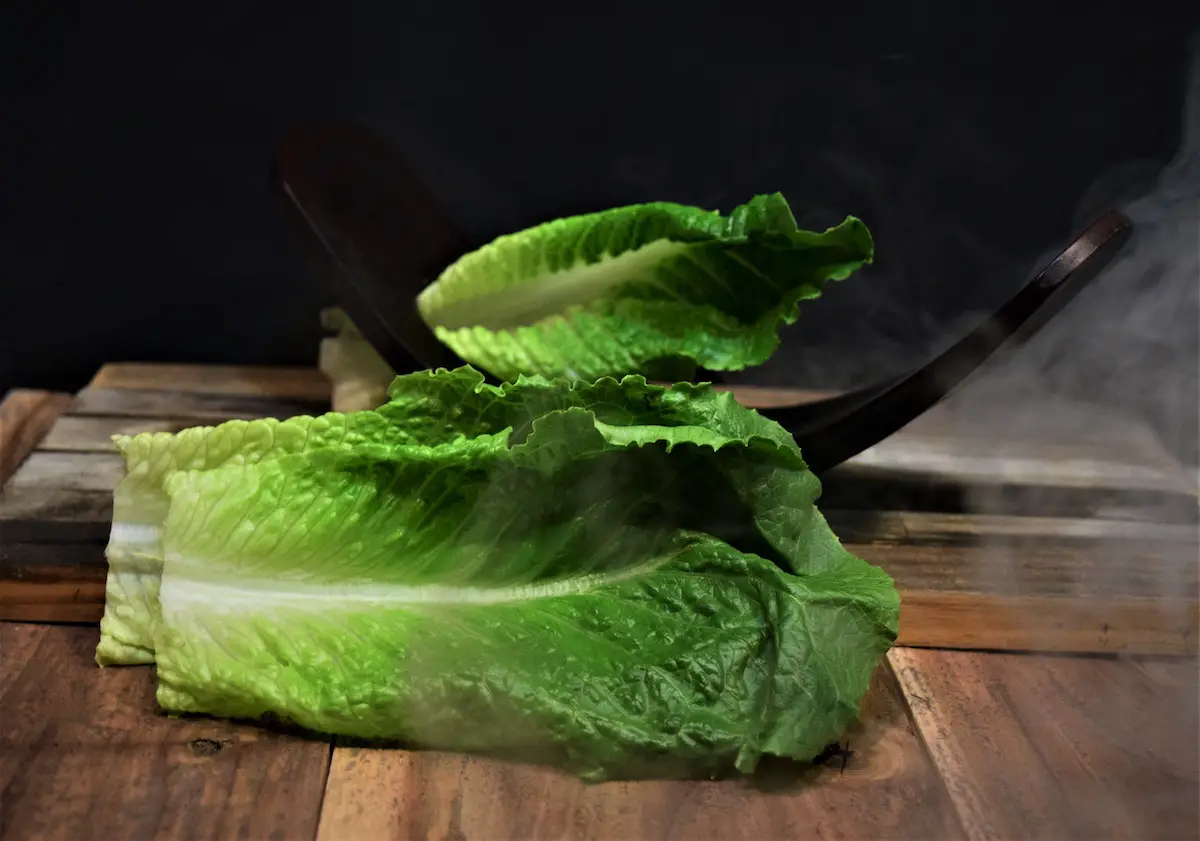Best Lettuce For Lettuce Wraps – Taste of Health & Crunch
Norah Clark
The best lettuce for lettuce wraps is butter lettuce as the leaves have the perfect texture and shape to accommodate fillings, and its mild flavor complements various ingredients. But, read on for other lettuce wraps if butter lettuce is not available.
Lettuce wraps are a fantastic substitute for tortillas and tacos, as gem lettuce provides a naturally gluten-free option.
They are also fresh, light, and low in calories. Various lettuce types are available for selection, as we will highlight below.
Discover the best lettuce for making tasty lettuce wraps and explore other alternatives that can be used if our top choice is unavailable.
The Best Lettuce For Lettuce Wraps
Butter lettuce, or Boston or Bibb, is a loose-headed lettuce variety.
It comes in shades from bright green to reddish pink.
Butter lettuce is the perfect choice for making lettuce wraps, and here’s why:
Round and Broad Leaves
Unlike other lettuce varieties, butter lettuce leaves have a circular shape and are quite large. These two characteristics make butter lettuce the ultimate choice for lettuce wraps.
You can add a generous amount of filling and wrap it securely without any leakage.
Flexible Yet Strong Leaves
Butter lettuce leaves are sturdy enough to hold heavier meat fillings or lighter vegetable fillings. However, they are also flexible enough for wrapping.
These leaves are incredibly soft to the touch and somewhat delicate, hence the name “butter.” So, while they’re strong, you should handle them with care to avoid tearing.
Mild Flavor
Butter lettuce has a mild, sweet taste with a hint of bitterness. Its subtle flavor complements various recipes without overpowering them.
Easy-to-Separate Leaves
Compared to iceberg lettuce, which requires more effort to separate leaves, butter lettuce is relatively easy to work with.
Being a loose-headed lettuce variety means that its leaves don’t cling together as tightly as those of hard-headed lettuce varieties.
Alternatives To Butter Lettuce
If butter lettuce is hard to find, don’t worry; you can still create delicious lettuce wraps. Several other lettuces work well for lettuce wraps:

Iceberg Lettuce
Iceberg lettuce is a popular choice for lettuce wraps.
Its leaves are well-shaped for wrapping and sturdy enough to hold the filling.
In contrast to soft butter lettuce, iceberg lettuce adds crunch. If you’re looking for a lettuce variety that provides minimal flavor but a crisp texture for salads and wraps, this is it.
Romaine Lettuce
Romaine lettuce leaves are thinner compared to butter or iceberg lettuce. However, you can use the longer, outer leaves to make lettuce wraps.
The thicker ribs might break when folded, but romaine lettuce is still a great option due to its taste and crispness.
Baby Gem
Baby gem lettuce is perfect for creating smaller lettuce wraps. The leaves are sturdy and form a lovely lettuce cup.
Use baby gem lettuce to serve filling in individual portions, surrounded by lettuce leaves, creating a cup-like presentation.
What Makes Lettuce Great For Wraps?
Lettuce comes in various sizes, shapes, and flavors. When selecting the right lettuce for your wraps, it’s essential to consider certain qualities such as flavor, sturdiness, flexibility, and how well the leaves can hold the filling.
Texture
Some lettuce varieties offer more crunch than others. Iceberg lettuce, for example, is a favorite for its crispness.
In contrast, butter lettuce is softer, making it easier to wrap around the filling.
Depending on your desired texture, choose from various lettuce wraps like butter, Boston, iceberg, or romaine lettuce.
Taste
Different lettuce varieties have distinct flavors, ranging from buttery and mild to slightly bitter.
To ensure the lettuce doesn’t alter the overall taste of the wrap, choose a variety with a complementary flavor.
While some bitterness is normal in varieties like romaine, certain conditions, such as malnutrition or inappropriate temperatures, can cause any lettuce to taste bitter.
Since lettuce is a cool-season green, it’s not unusual for it to become bitter in hot weather.
Shape and Size of The Leaves
The shape and size of lettuce leaves are crucial factors for making wraps. Lettuce leaves come in various shapes, from large, round leaves to elongated ones. Round leaves work best for wraps, as they can create well-sized wraps with ample filling. For mini lettuce cups as appetizers or snacks, use smaller lettuce heads.
Regardless of the leaf size, it’s essential that each has a sturdy rib to ensure the lettuce wrap holds up well. If you remove the ribs, the lettuce wrap will fall apart, even with a light filling. For leaves with thick ribs, consider cutting them out, as they may break when folding the lettuce into a wrap.
Best Way to Purchase Butter Lettuce
When selecting butter lettuce for wraps, we recommend purchasing whole-head lettuce instead of pre-washed leaves packaged in plastic bags. While pre-washed salad leaves are convenient, they can’t match the freshness of lettuce leaves still attached to the core.
Pay attention to the color. Butter lettuce comes in various shades, but the leaves shouldn’t be brown or yellow. For lettuce wraps, ensure the leaves are firm and maintain their shape.
The outer leaves might have some damage, but make sure none of the larger inner leaves are torn or have holes. To create sizable lettuce wraps, you’ll need bigger leaves that face outwards.
How To Prepare Butter Lettuce For Lettuce Wraps
When preparing a dish with butter lettuce, buy the lettuce no earlier than one day before. It’s a perishable vegetable that doesn’t last long in the fridge and will start to wilt and lose its freshness.
As a loose-headed lettuce, cutting or shredding butter lettuce leaves for wraps is easy.
Follow these steps to prepare lettuce wraps with butter lettuce and store them in the refrigerator for later use:
- Take a whole head of butter lettuce and remove the core.
- Cut around the middle to remove the core in one piece.
- Once the core is removed, the leaves will start separating from each other. Unlike iceberg lettuce, which requires water to separate the leaves, butter lettuce does this on its own.
- Gently separate any remaining leaves stuck together, especially smaller ones near the center of the head.
- Place the leaves in a bowl of water and rinse them several times until the water is clear.
- Use a salad spinner to dry the leaves.
- If the salad spinner doesn’t completely dry the leaves, lay them on a towel to absorb excess water.
- If you plan to use the leaves within the next few days, place them on a towel, wrap them gently, and put them in a sealable bag.
- Use within 3 to 5 days.
What Should You Put In Lettuce Wraps?
These are some suggestions for lettuce wraps:
- Ground beef/pork
- Pan-fired chicken
- Thinly cut steak
- Marinated salmon slices
- Goat cheese
- Potato salad
- Chickpeas spicy
Whatever you choose to use in the lettuce wraps, you must ensure the filling isn’t too hot. If it is, the lettuce will begin to wilt, and the crunch and freshness of the greens won't last.
Frequently Asked Questions
How do you make lettuce wraps that don’t fall apart?
To make lettuce wraps that don’t fall apart, choose a sturdy variety like butter, iceberg, or romaine lettuce. Remove the core, carefully separate the leaves without tearing them, and dry them thoroughly. When assembling the wrap, avoid overfilling and distribute the ingredients evenly. Secure the wrap with a toothpick or use a double layer of lettuce leaves for added stability if necessary.
What is the best lettuce to use as a bun?
The best lettuce to use as a bun is iceberg lettuce, thanks to its crisp texture, sturdy leaves, and ability to hold up well under the weight of burger ingredients. Simply separate the outer leaves of the iceberg lettuce, wash and dry them, and use them instead of a traditional bun for a low-carb, gluten-free alternative.
What kind of lettuce is best for wraps and sandwiches?
The best lettuce for wraps and sandwiches depends on personal preferences and desired texture. Butter lettuce is soft, flexible, and has a mild flavor, making it ideal for wraps. Iceberg lettuce offers a crisp texture and sturdy leaves, suitable for both wraps and sandwiches. Romaine lettuce is another popular choice; its long leaves and crunchy texture are perfect for sandwiches and wraps.
Is iceberg or romaine better for lettuce wraps?
Both iceberg and romaine lettuce are great options for lettuce wraps, but the choice depends on individual preferences. Iceberg lettuce is crisp, sturdy, and provides a satisfying crunch, while romaine lettuce is slightly more tender, with mild bitterness and a longer leaf shape. Consider your desired texture and flavor when choosing between these two wrap-lettuce varieties.










